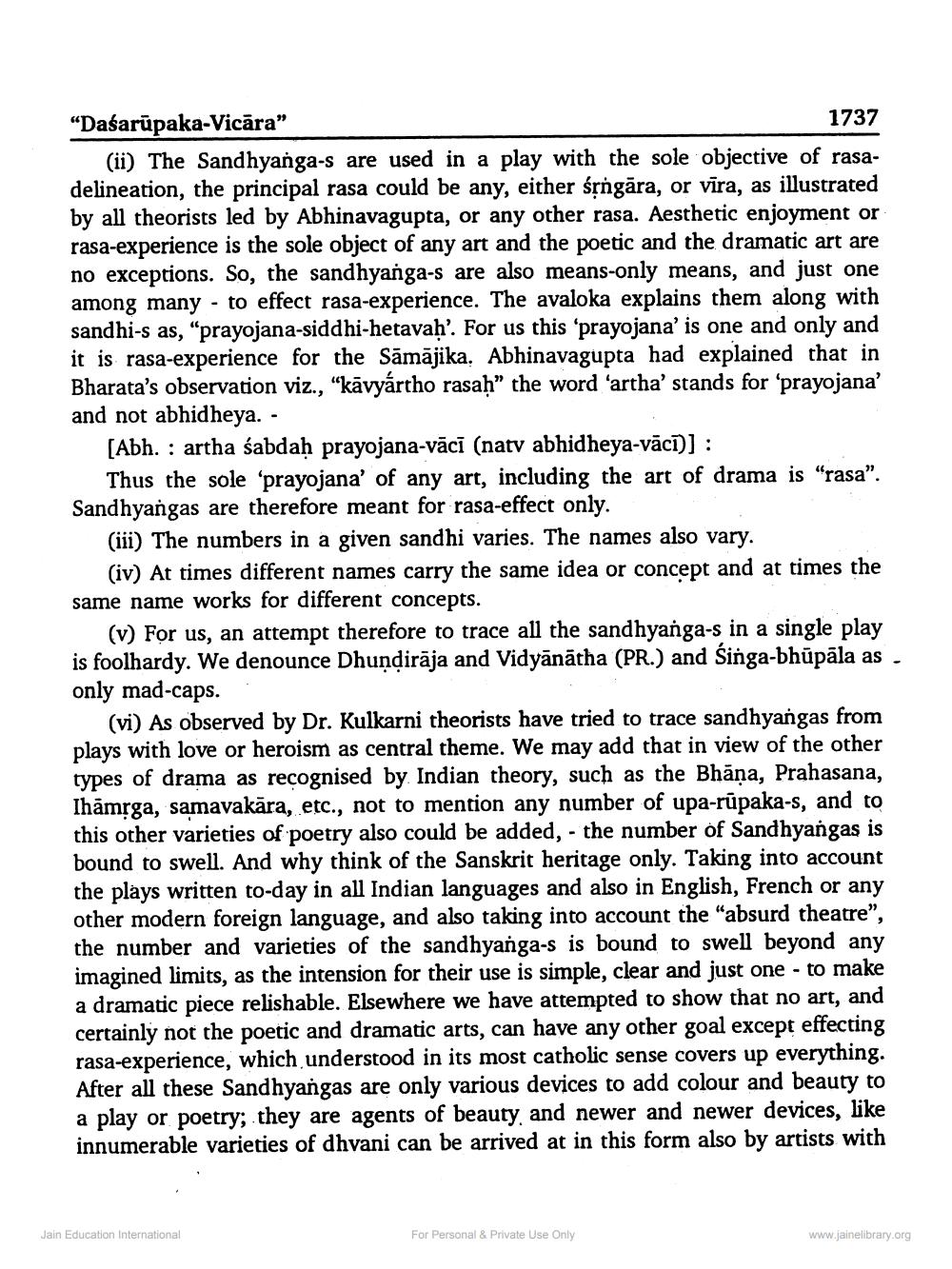________________
“Daśarūpaka-Vicāra”
1737 (ii) The Sandhyanga-s are used in a play with the sole objective of rasadelineation, the principal rasa could be any, either śộngāra, or vīra, as illustrated by all theorists led by Abhinavagupta, or any other rasa. Aesthetic enjoyment or rasa-experience is the sole object of any art and the poetic and the dramatic art are no exceptions. So, the sandhyanga-s are also means-only means, and just one among many - to effect rasa-experience. The avaloka explains them along with sandhi-s as, “prayojana-siddhi-hetavah. For us this 'prayojana' is one and only and it is rasa-experience for the Sāmājika. Abhinavagupta had explained that in Bharata's observation viz., “kāvyártho rasaḥ” the word 'artha' stands for 'prayojana' and not abhidheya. -
[Abh. : artha sabdah prayojana-vācī (natv abhidheya-vācī)] :
Thus the sole 'prayojana' of any art, including the art of drama is “rasa”. Sandhyangas are therefore meant for rasa-effect only.
(iii) The numbers in a given sandhi varies. The names also vary.
(iv) At times different names carry the same idea or concept and at times the same name works for different concepts.
(v) For us, an attempt therefore to trace all the sandhyanga-s in a single play is foolhardy. We denounce Dhundirāja and Vidyānātha (PR.) and Singa-bhūpāla as. only mad-caps.
(vi) As observed by Dr. Kulkarni theorists have tried to trace sandhyangas from plays with love or heroism as central theme. We may add that in view of the other types of drama as recognised by Indian theory, such as the Bhāņa, Prahasana, Ihāmțga, samavakāra, etc., not to mention any number of upa-rūpaka-s, and to this other varieties of poetry also could be added, - the number of Sandhyangas is bound to swell. And why think of the Sanskrit heritage only. Taking into account the plays written to-day in all Indian languages and also in English, French or any other modern foreign language, and also taking into account the "absurd theatre", the number and varieties of the sandhyanga-s is bound to swell beyond any imagined limits, as the intension for their use is simple, clear and just one - to make a dramatic piece relishable. Elsewhere we have attempted to show that no art, and certainly not the poetic and dramatic arts, can have any other goal except effecting rasa-experience, which understood in its most catholic sense covers up everything. After all these Sandhyangas are only various devices to add colour and beauty to a play or poetry; they are agents of beauty and newer and newer devices, like innumerable varieties of dhvani can be arrived at in this form also by artists with
Jain Education International
For Personal & Private Use Only
www.jainelibrary.org




